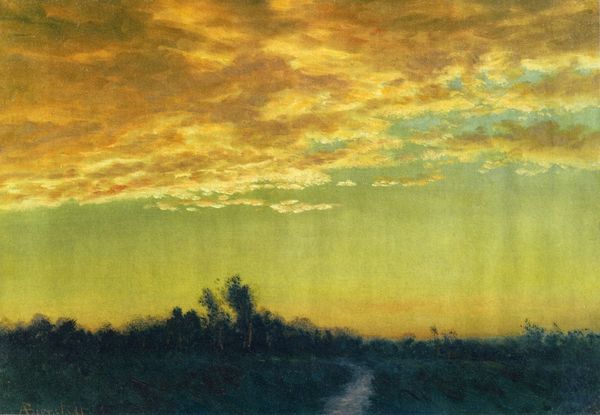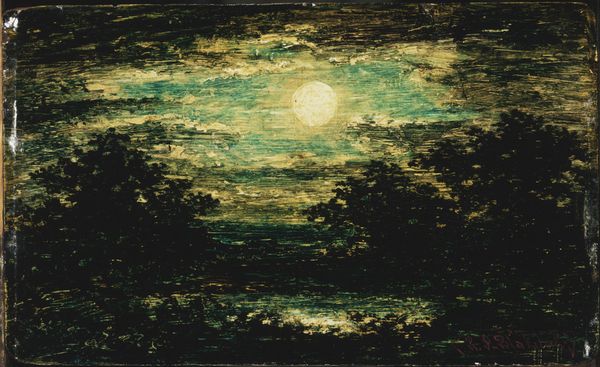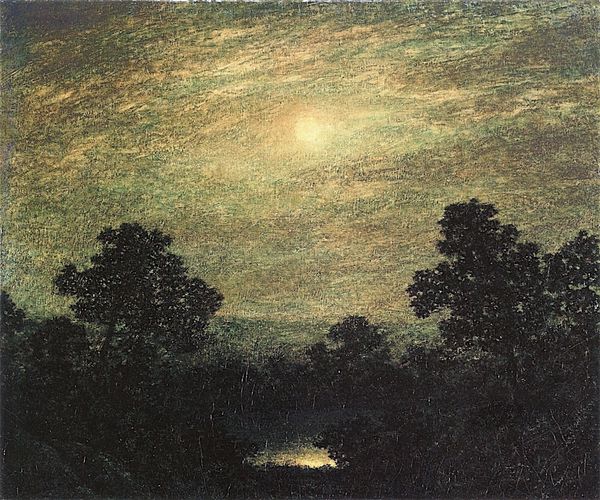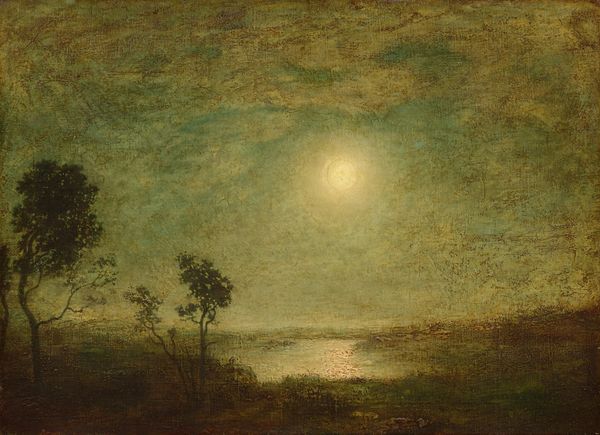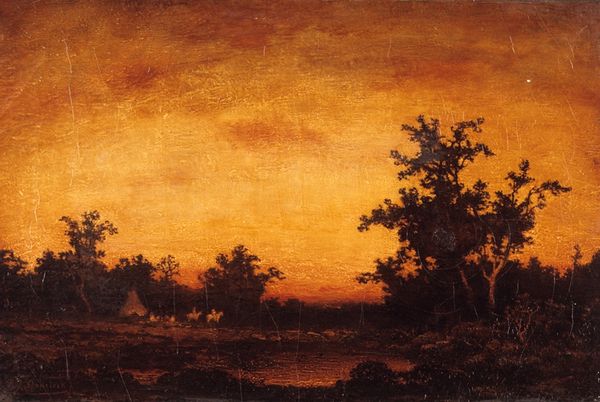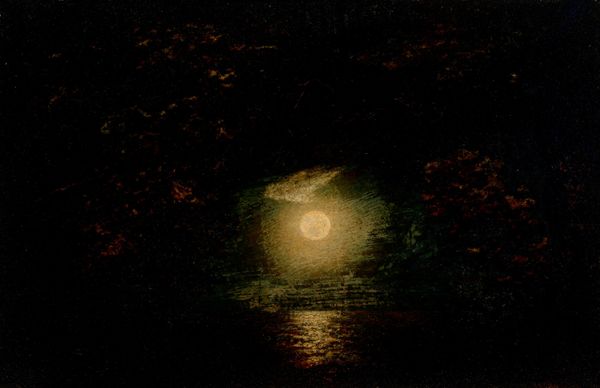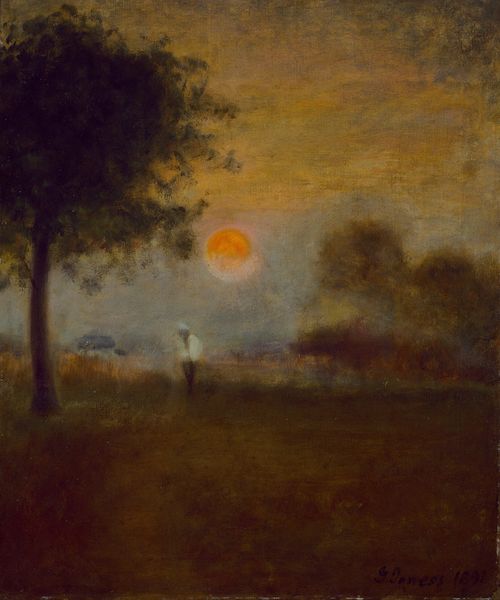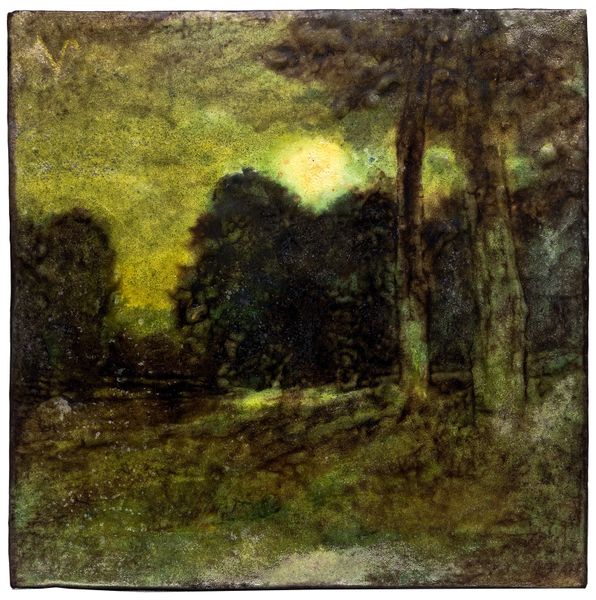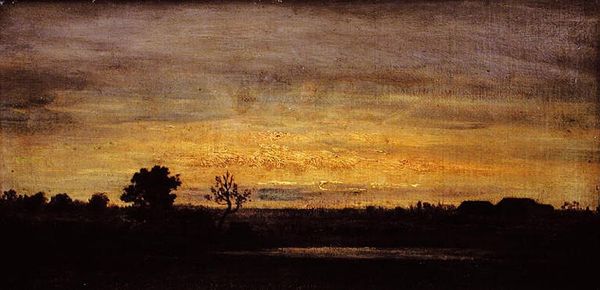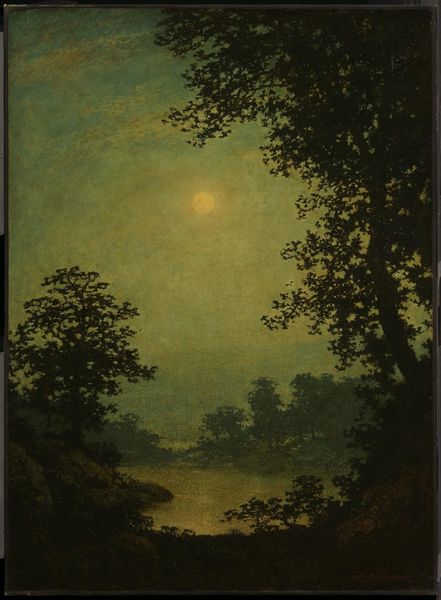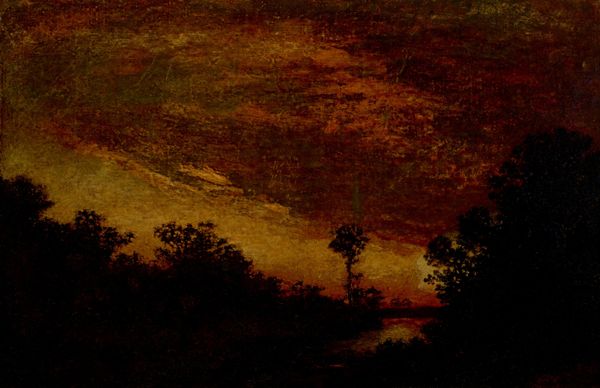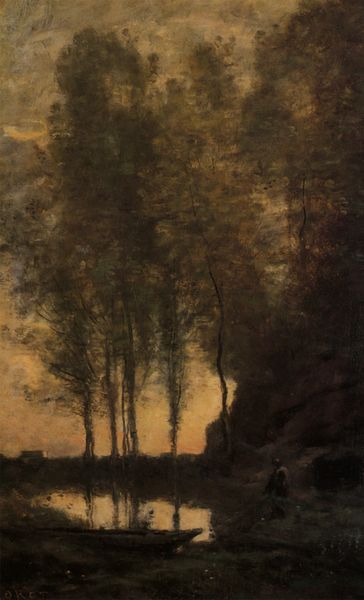
Copyright: Public domain
Curator: This is Ralph Blakelock's "Moonlight" from 1890. It's oil on canvas, and immediately, the eerie glow really catches your eye. Editor: It's gorgeous, though kind of haunting, right? It reminds me a bit of Romanticism, but the textures look almost Impressionistic. What draws your eye when you look at this piece? Curator: For me, it's the materiality of it all. Blakelock reportedly built up the surface with layer after layer of paint, then scraped it down, only to build it up again. The act of production, the labor embedded in the very surface, that's compelling. Think about what that process says. Editor: So it's not just about what the scene depicts, but about the "how?" Like the repeated layering becoming part of the message? Curator: Exactly. What was he trying to achieve through such a laborious, almost destructive process? Was it about conjuring that otherworldly luminescence through sheer physical effort? And think about his biography – troubled, eventually institutionalized. Does that inform how we view the application and removal of material here? How he practically tortures the material itself? Editor: Wow. I hadn't considered the biographical element so directly tied to the paint itself, the layering and scraping as this physical manifestation of inner turmoil... Curator: Furthermore, where did Blakelock source his materials? Who made the pigments? What was the social status of art material production at this time? His work invites us to look past the idyllic surface and question the complex interplay of labor and resources. Editor: So, understanding the means of production—the 'stuff' of the art and the social relations behind it—gives "Moonlight" a whole other layer of significance. I am walking away with a new perspective. Curator: Indeed! Seeing art through the lens of its materiality, of its production, lets us challenge these conventional interpretations and look into the true meaning and complexity behind a seemingly simplistic work.
Comments
No comments
Be the first to comment and join the conversation on the ultimate creative platform.
